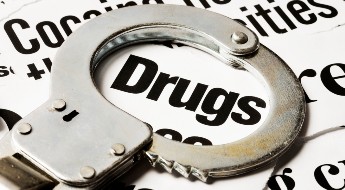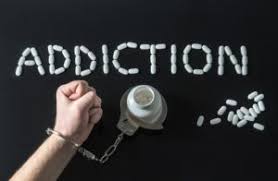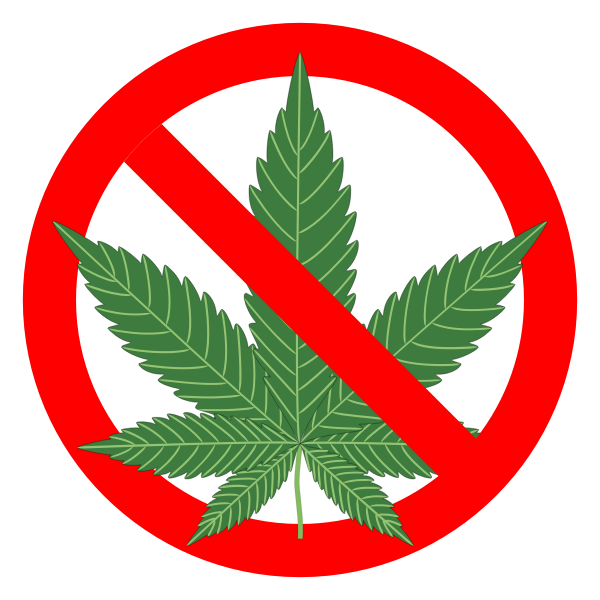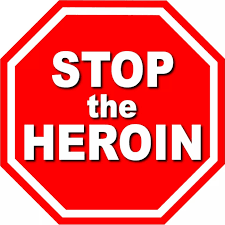| ||||||||||||||||||||||||||||||||||||||||||||||||||||||||||||||||||||||||||||||||||||||||||||||||||||||||||||||||||||||||||||||||||||||||||||||||||||||||
|
|
| |||||||||||||||||||||||||||||||||||||||||||||||||||||||||||||||||||||||||||||||||||||||||||||||||||||||||||||||||||||||||||||||||||||||||||||||||||||||
|
ТЕМА 11. Противодействие незаконному обороту наркотиков
Unit 11
Combating Illegal Drug Trafficking
The widespread use of drugs such as heroin, cocaine, marijuana and synthetic drugs is commonly viewed as an important social problem. The situation in the sphere of drug addiction and illegal drugs trafficking is characterized by the high rates of crime rise and constantly increasing number of drug addicts. Drugs-related criminality challenges the social order. Very large proportions of those arrested for street crimes such as robbery, burglary, and larceny are drug users. Illegal manufacture, distribution, possession and transportation of drugs and their precursors is a great problem in many countries. Unfortunately, Belarus is not an exception. Alongside with such drugs as opiates (extracted from poppy) and marijuana, which are already considered to be traditional, synthetic drugs such as methadone and amphetamines are transported to our republic more often. Marijuana and synthetic drugs are the most common in Belarus. Poppy and cannabis plants are grown in Belarus and some synthetic drugs are produced in the country, mostly used for local consumption. Nowadays synthetic drug trafficking is the fastest-growing criminal market in Belarus. Due to the geographical location and transparent borders especially with the Russian Federation our country is the territory of drugs transit and a part of the Old and New Silk Route for heroin trafficking from the Middle East to Europe. A large number of other drug trafficking channels also pass through the territory of our country. But Belarus is gradually turning into a demand country, because of the constantly growing number of drug addicts. International community has developed different approaches to combating drug trafficking: 1. The most radical approach to dealing with drug trafficking is to legalize the drugs. The goal of legalizing drugs is to bring them under effective legal control. The supporters of this approach believe that if it is legal to produce and distribute drugs, legitimate businessmen will enter the business. There will be less need for violence and corruption. Besides drug use under legislation will be less destructive to users, because drugs will be less expensive and purer. But the opponents of this approach argue that legalization of drugs may cause a significant increase in the level of drug use. 2. The next approach to dealing with drug trafficking is to try to eliminate the raw materials that are used for drug production. For heroin, cocaine, and marijuana, this means controlling poppy, coca leaf, and cannabis crops in countries such as Afghanistan, Bolivia, Colombia, Jamaica, Mexico, Peru, Thailand and Turkey. 3. The third attack on illicit trafficking is directed at the organizations involved in producing and distributing drugs. The basic aim is to immobilize or destroy the trafficking networks. The main problem with attacking illicit trafficking organizations is that it is very expensive. Convincing evidence can be produced only through efforts to recruit informants, establish electronic surveillance, and insinuate undercover agents. 4. One of the most important measures to combat drug trafficking is international cooperation. The Republic of Belarus has joined all the UN international conventions on control over the illegal trafficking in drugs and psychotropic substances. Bilateral and multilateral agreements on cooperation in combating drug trafficking have been signed with all countries of the CIS as well as some European countries, China, Vietnam and others. Training seminars, education and training programs as well as international exchange of theoretical and practical knowledge between different countries in the given sphere are of great importance. So are the preventive activities, which include: informing young people and the general public on the risks and consequences of drug abuse; improving the qualification of specialists dealing with drug abuse prevention; arranging inter-agency cooperation in the field of drug abuse prevention.
А Exercise 1. Give the English for: незаконный оборот наркотиков, высокий уровень роста преступности, постоянно увеличивающееся количество наркозависимых, общественный порядок, синтетические наркотики, посевы мака и конопли, географическое положение, проницаемые границы, Старый и Новый шелковый путь, психотропные вещества, бороться с незаконным оборотом наркотиков, радикальный подход, уничтожать сырье, изготовление и распространение наркотиков, наркосети, внедрять негласных агентов, международное сотрудничество, многосторонние соглашения, СНГ, обмен теоретическими и практическими знаниями, предупредительные меры, последствия употребления наркотиков.
Exercise 2. Match English and Russian equivalents:
Exercise 3. Complete the sentences: 1) Nowadays an important social problem is…. 2) The situation in the sphere of drug trafficking is characterized by…. 3) Drugs, which are considered to be traditional are…. 4) Drug users often commit such crimes as …. 5) The most common drugs in Belarus are…. 6) Belarus is the territory of drug transit due to…. 7) The most radical approach to dealing with drug trafficking is…. 8) Attacking illegal drug trafficking organizations is very expensive because…. 9) Belarus has signed bilateral and multilateral agreements with…. 10) The drug abuse prevention activities are….
Exercise 4. Agree or disagree: 1) The situation in the sphere of drug addiction is characterized by reducing number of drug addicts. 2) Alongside with heroin and marijuana, methadone and amphetamines are transported to our republic more often. 3) Nowadays cocaine is the fastest-growing market in Belarus. 4) The goal of legalizing drugs is to increase the level of drug use. 5) One of the approaches to dealing with drug trafficking is to try to eliminate the raw materials that are used to produce drugs. 6) The main problem with attacking illicit drug trafficking organizations is that it is very expensive. 7) International cooperation is not an effective method in combating illegal drug trafficking. 8) Belarus hasn’t signed any agreements on cooperation in combating drug trafficking. 9) International exchange of theoretical and practical knowledge is of great importance in combating illegal drug trafficking. 9) Our law-enforcement agencies don’t face any problems in combating illegal drug trafficking.
Exercise 5. Answer the questions:
1) What is one of the most important social problems nowadays? 2) Why does drug abuse challenges the social order? 3) What drugs are transported to our republic? 4) What synthetic drugs are the most common in Belarus? 5) Why is Belarus a country of drug transit? 6) What are the main approaches to combating illegal drug trafficking? 7) What are the pros and cons of drug legalization? 8) Why is it expensive to attack illicit trafficking organizations? 9) How does Belarus cooperate with other countries in combating illegal drug trafficking? 10) What are the measures to prevent illegal drug trafficking?
B
Exercise 1. a) Form Participle II, using the model. Translate Participle II into Russian: Model: to develop – developed – развитый To develop, to increase, to produce, to eliminate, to immobilize, to insinuate, to sign.
b) Make word combinations using Participle II from part a) and a noun from part b). Translate word combinations into Russian: Model: developed countries – развитые страны Undercover agents, bilateral agreements, raw materials, synthetic drugs, countries, number of drug addicts, trafficking networks.
Exercise 2. Translate the word combinations into Russian paying attention to Participle II: Drugs-related criminality, arrested drug users, transported drugs, grown raw materials, informed people, organized crime, a controlled situation.
Exercise 3. Transform the sentences according to the model. Translate them into Russian: Model: Drugs which are transported to our republic more often are synthetic drugs and amphetamines. – Drugs transported to our republic more often are synthetic drugs and amphetamines.
1. Synthetic drugs which are produced in our country are mostly used for local consumption. 2. The main raw materials which are used to produce drugs are poppy, cannabis, and coca leaf. 3. The attack on illicit drug trafficking which is directed at drug trafficking organizations is aimed to immobilize and destroy them. 4. Educational events which are held for schoolchildren and university students include lectures, workshops and seminars. 5. The heroin which is consumed in most of Asian countries is produced in Afghanistan and Myanmar.
Exercise 4. Find Participle I and Participle II in the sentences. Translate the sentences into Russian: 1. Drugs-related criminality challenges the social order. 2. Very large proportions of those arrested for street crimes such as robbery, burglary, and larceny are drug users. 3. But Belarus is gradually turning through from a transit country to a demand country, because of the constantly growing number of drug addicts. 4. The prevention activities include informing young people and the general public on the risks and consequences associated with drug abuse. 5. Cannabis is the most consumed drug in the world and therefore the subject of the most traffic. 6. Marijuana (herbal cannabis) and hashish (cannabis resin) are the terms associated with cannabis grown for its illicit use. 7. Mexico is the biggest cannabis producing country in the Americas. 8. Illegal drug trafficking affects almost all of Interpol member countries, undermining political and economic stability, ruining the lives of individuals and damaging communities.
C
Exercise 1. Read and translate the text: Threats of Illegal Drug Trafficking
This international trade involves growers, producers, couriers, suppliers and dealers. It affects almost all of Interpol member countries, undermining political and economic stability, ruining the lives of individuals and damaging communities. The end-users and addicts are often the victims of a powerful and manipulative business. Drug trafficking is often associated with other forms of crime, such as money laundering or corruption. Trafficking routes can also be used by criminal networks to transport other illicit products. As criminals devise ever-more creative ways of disguising illegal drugs for transport, law enforcement faces challenges in detecting such concealed substances. In addition, new synthetic drugs are produced with regularity, so police need to always be aware of new trends and products on the illicit market.
Exercise 2. Read and retell the text: Worldwide Cannabis Trafficking
Cannabis is the most consumed drug in the world and therefore the subject of the most traffic. The scientific name of cannabis is Cannabis Sativa. It is often referred to as marijuana (herbal cannabis) and hashish (cannabis resin), terms associated with cannabis grown for its illicit use, or as hemp, a term usually associated with cannabis plants grown for their fiber content. Cannabis is native to the mountainous areas of Central and South Asia. The plant has been used by man for over 6,000 years. Its uses, beside that of a stimulant-hallucinogenic drug, are as rope fibre, livestock food supplement, cooking oil, birdseed, paper and even medication. Cannabis trafficking is increasing in response to a high and rising demand. The indoor cultivation of cannabis continues to develop, especially in the Netherlands, Canada and the United States. The Central Asian Republics, where vast fields of cannabis cover several hundreds of thousands of hectares, remain a major source of supply for the illicit market. Southern Africa is also proving to be a region with a production potential for herbal cannabis, and although most of the cannabis grown in this part of the world is intended for local consumption, large shipments are being sent to Europe and North America. Mexico, the biggest cannabis producing country in the Americas, has consolidated its position as the primary supplier of herbal cannabis to the United States, and Jamaica continues to supply large quantities of cannabis oil to Canada, either directly or through the United States. Large cannabis seizures are made in Mexico, the United States, Western Europe and Southern Africa every year.
Exercise 3. Read and retell the text: Heroin Trafficking
West African nationals frequently used Asian airports like Bangkok, Mumbai, Delhi, Tehran, Karachi, Islamabad and Lahore to smuggle heroin in body cavities or household goods. They were also responsible for recruiting European nationals as couriers to bring heroin by air from Southeast Asia to Europe. Moscow has developed into a hub of their activities and from there traffic is organized in Ukraine, Romania and some Central Asian Republics. They also organized heroin traffic from Pakistan and Thailand by mailing parcels usually by express mail services to various destinations in North America and Europe. The Nigerian organizations also used nationals of East European countries particularly females with forged passports to smuggle the drug from Turkey to Greece and other European countries. North America remains relatively an important heroin market in the world. For a number of years, heroin in the USA arrived mainly from Southeast Asian countries, which had well-knit networks in the USA. Asia is seriously affected by heroin traffic and abuse. The heroin consumed in most of Asian countries is produced in Afghanistan and Myanmar. In addition to the trafficking routes westwards through Iran and Turkey to Europe, northwards through the Central Asian countries and Russia to Europe, Afghanistan heroin is also channelled through Pakistan and India for transit to the European market by ship and plane. The abuse of heroin among youth is a serious problem. Children as young as 13 have been found involved in heroin abuse. According to statistics, heroin overdose has caused more deaths than traffic accidents.
D
Combating Illegal Drug Trafficking
Краткий грамматический справочник | ||||||||||||||||||||||||||||||||||||||||||||||||||||||||||||||||||||||||||||||||||||||||||||||||||||||||||||||||||||||||||||||||||||||||||||||||||||||||
|
| ||||||||||||||||||||||||||||||||||||||||||||||||||||||||||||||||||||||||||||||||||||||||||||||||||||||||||||||||||||||||||||||||||||||||||||||||||||||||
| © Академия Министерства внутренних дел Республики Беларусь Электронный учебно-методический комплекс | ||||||||||||||||||||||||||||||||||||||||||||||||||||||||||||||||||||||||||||||||||||||||||||||||||||||||||||||||||||||||||||||||||||||||||||||||||||||||

 Criminal networks traffic a range of drugs including cannabis, cocaine, heroin and methamphetamine. As international borders become increasingly porous, global abuse and accessibility to drugs have become increasingly widespread.
Criminal networks traffic a range of drugs including cannabis, cocaine, heroin and methamphetamine. As international borders become increasingly porous, global abuse and accessibility to drugs have become increasingly widespread.
